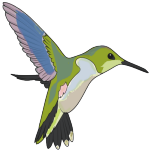Dairy, Cheese and Milk Allergies: How to Avoid Milk Based Products and Ingredients
Advice on avoiding milk, milk proteins (casein), and other dairy ingredients, when your child has food allergies.
By A. Anderson
Dairy includes all mild, cheese and by-products from cow's milk, Dairy is often divided into two types: lactose (the sugar) and casein (the protein). Lactose intolerance is not an allergy and while it can be uncomfortable for the digestive system, it will not produce anaphylactic shock. Lactose-free (dairy-sugar-free) dairy products still contain dairy protein so lactose-free foods should not be consumed by those allergic to dairy.
To make matters more complicated, some products are labeled as "non-dairy" but contain dairy in the form of casein. Casein is cow's milk protein which is exactly what a child reacts to when an anaphylactic response is triggered. So a parent might pick up some rice cheese that says "non-diary" on the front label, but the ingredient label might include casein, which is dairy protein. Therefore this "non-diary" rice cheese could cause anaphylactic shock if fed to a child who is allergic to dairy. I have learned this from experience. Although I have never accidentally fed my children this kind of "non-diary" cheese, there have been plenty of times I have stood in the grocery store reading the back label of a "non-diary" cheese and found the milk protein or casein ingredient. I think it is wrong that manufacturers can market their product this way because it is misleading and dangerous. I saw a news story on television where a mother accidentally gave her pre-teen son this kind of cheese and it produced an allergic reaction.
I have found through my own experience of reading labels that dairy is included in almost all pre-packaged cakes, cookies, crackers, breads and cereals. It is commonly under the name of non-fat milk, lactic acid or whey in these products. I have found that any product which says, "calcium enriched" normally uses dairy as the source of that supplement. For instance, calcium lactate can be found in apple juice and orange juice that says calcium enriched.
My husband discovered that some deli meats and hot dogs contain dairy form the processing stage. Even some tuna fish contains dairy. He asked our local supermarket deli service people whether the meat-slicers are used to slice both meat and cheese. They responded that they try to use one for meat and one for cheese, but if the cheese slicer is busy, they will slice the cheese on the slicer normally used to meat. So we don't buy meat from the deli for our sons because it may contain cheese residue.
I have found that some cosmetics, hair products, soaps, and lotions contain dairy products. For instance, I was using hair products and found that they contained lactic acid, a diary ingredient. I stopped suing these products because perhaps some dairy residue was being left around the house from my hair.
Diary is or may be in all of these ingredient names as well: Artificial flavoring (maybe), beverage whitener, butter, butter oil, calcium caseinate, calcium lactate, caramel, casein, caseinate, cheese, cream, custard, curd, demineralised whey, fromage frais, galactose, ghee, lactobacillus (unless specified that derived from a non-dairy source), lactalbumin phosphate, lactalbumin, lactate, lactic acid, lactoglobulin, milk powder, lactose, malted milk, margarine, milk solids, natural flavoring-flavors (maybe), non-fat milk, non-fat milk solids, potassium caseinate, ready sponge, skim milk powder, sodium caseinate, sour cream, sweet whey powder, vegetable fats, whey, whey protein, whey solids, yogurt.
There may be other ingredients that contain dairy or are derived from diary. Please use this list as a starting point only, not as a comprehensive list. The information is general in nature and is provided for informational purposes only. Be sure to verify your list with your child's doctor. The above ingredient lists were obtained from various sources.
